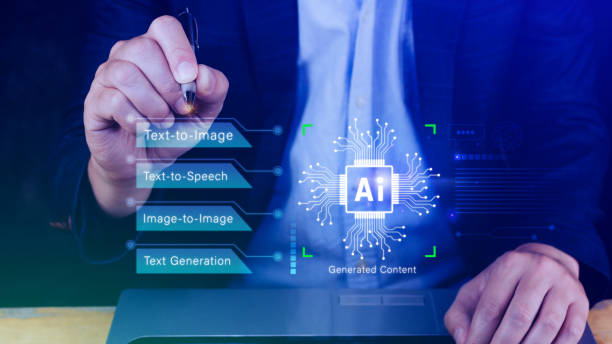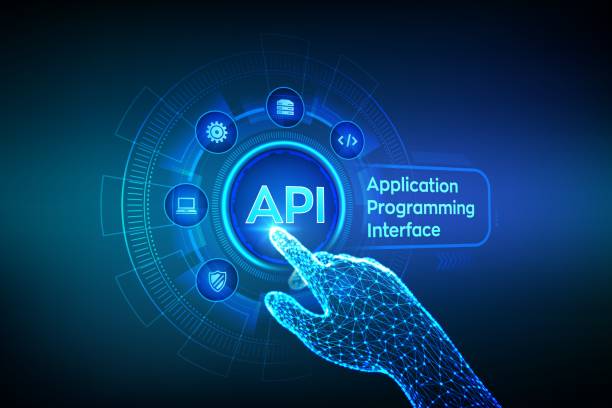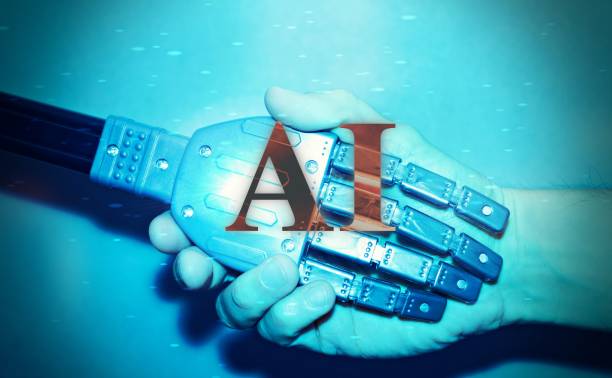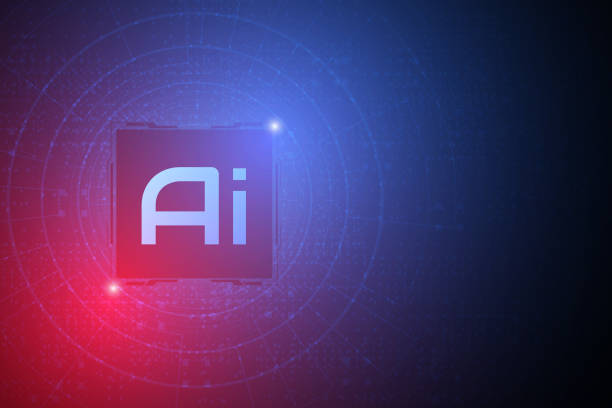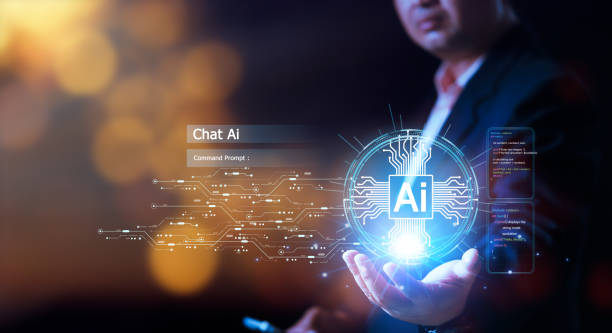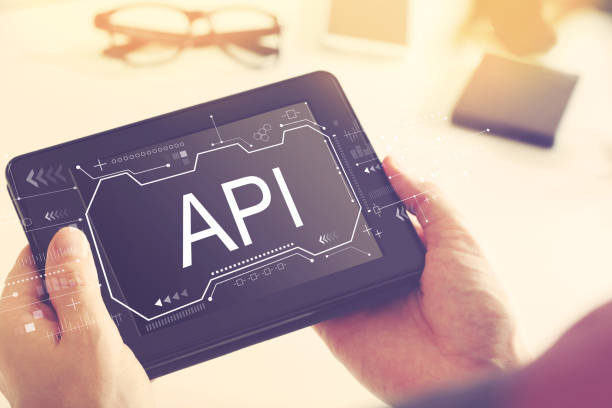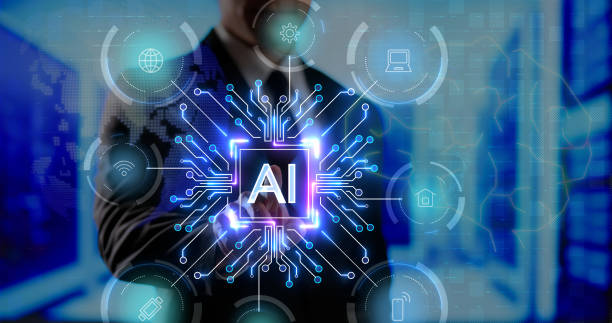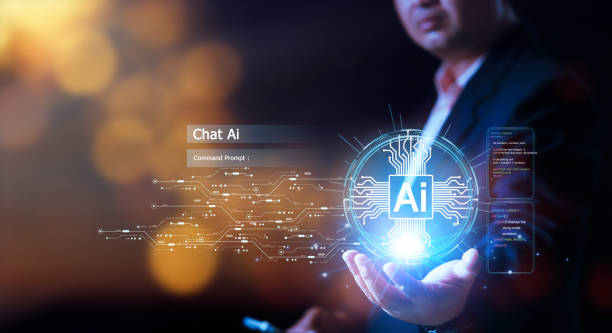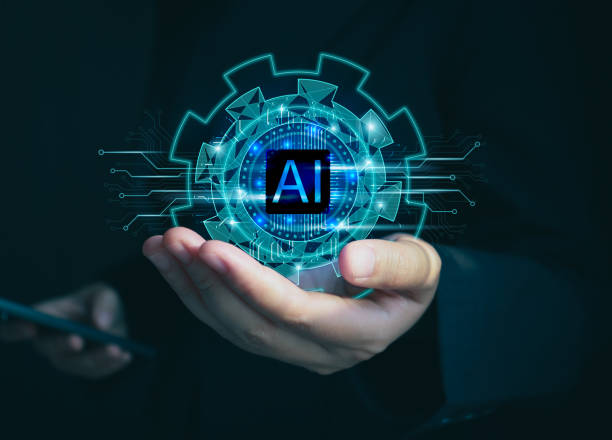What is an Artificial Intelligence Robot and How Does it Work?
In today’s world, #Artificial_Intelligence is rapidly advancing, and the artificial intelligence robot is one of its most fascinating and widely used achievements.
An artificial intelligence robot is essentially a computer program or machine that can perform tasks that typically require human intelligence.
These tasks include learning, problem-solving, decision-making, pattern recognition, and understanding natural language.
These robots, using complex algorithms and a vast amount of data, are capable of simulating human cognitive processes.
The way an artificial intelligence robot works depends on its type and application.
In general, these robots receive data through sensors or other sources, then use machine learning algorithms to identify patterns and relationships in the data.
Based on these patterns, the robot can make decisions, make predictions, or perform a specific action.
For example, an artificial intelligence robot in the field of customer service can analyze customer questions, provide appropriate answers, or refer them to the relevant department.
Is your company’s website as professional and reliable as it should be? Create an online presence that reflects your credibility and attracts more customers with professional corporate website design by Rasaweb.
✅ Building a powerful and professional image of your brand
✅ Converting visitors into real customers
⚡ Get a free consultation now!
Types of Artificial Intelligence Robots: Examining Applications and Differences
Artificial intelligence robots are designed and built in various types, each with its own specific applications.
One common classification is based on the type of operation.
In this classification, we can refer to chatbot robots, industrial robots, medical robots, and military robots.
Chatbots are artificial intelligence robots designed to interact with users through text or voice.
These robots are commonly used on websites, applications, and social networks to provide customer service, answer frequently asked questions, and provide information.
Industrial robots are used to perform repetitive and dangerous tasks in factories and industrial environments.
These robots can perform tasks such as welding, painting, packaging, and assembly with high accuracy and speed.
Medical robots are used in various medical fields such as surgery, disease diagnosis, and rehabilitation.
These robots can perform complex surgeries with high accuracy or help doctors diagnose diseases.
Military robots are used for various military tasks such as reconnaissance, espionage, and warfare.
These robots can collect information in dangerous and inaccessible environments or assist human forces on the battlefield.
Click here to preview your posts with PRO themes ››
Advantages of Using Artificial Intelligence Robots in Various Industries
The use of artificial intelligence robots in various industries offers many advantages.
One of the most important advantages is increased productivity and reduced costs.
Artificial intelligence robots can perform tasks faster and more accurately than humans and work continuously without the need for rest.
This leads to increased production and reduced labor costs.
Another advantage is improved product and service quality.
Artificial intelligence robots can optimize production processes and service delivery by analyzing data and identifying patterns, and prevent errors.
This leads to increased customer satisfaction and improved brand image.
Also, artificial intelligence robots can be used to perform dangerous and inaccessible tasks for humans.
This leads to reduced life and financial risks and increased workplace safety.
For example, in the mining industry, artificial intelligence robots can be used to extract mines in dangerous and inaccessible environments.
Finally, the use of artificial intelligence robots can lead to innovation and technology development.
Artificial intelligence robots can provide new ideas for developing products and services by analyzing data and identifying patterns.
| Industry | Application of Artificial Intelligence Robot |
|---|---|
| Manufacturing | Automation of production lines, quality control |
| Medicine | Robotic surgery, disease diagnosis |
| Customer service | Answering questions, providing support |
| Finance | Fraud detection, risk management |
Challenges and Limitations of Artificial Intelligence Robots
Despite the many advantages, the use of artificial intelligence robots also comes with challenges and limitations.
One of the most important challenges is the high cost of developing and implementing artificial intelligence robots.
Developing these robots requires high expertise and technical knowledge and also requires a significant investment in hardware and software.
Another challenge is the ethical concerns related to the use of artificial intelligence robots.
Some people are concerned that artificial intelligence robots may replace human labor and lead to increased unemployment.
There are also concerns about the misuse of artificial intelligence robots for unethical and harmful purposes.
Another limitation is the dependence of artificial intelligence robots on data.
Artificial intelligence robots need a huge amount of data to learn and perform their tasks.
If the data is incomplete or incorrect, the robot’s performance will also be affected.
Finally, artificial intelligence robots are not yet able to understand and simulate all aspects of human intelligence.
These robots may not perform well in unexpected and complex situations.
Don’t have a company website yet and are missing out on online opportunities? With professional corporate website design by Rasaweb,
✅ Double the credibility of your business
✅ Attract new customers
⚡ Free consultation for your company website!
What Transformations Await the Future of Artificial Intelligence Robots?
The future of artificial intelligence robots is very bright and full of transformations.
It is expected that in the future, artificial intelligence robots will become more advanced, smarter, and more versatile.
These robots will be able to perform more complex tasks and operate independently in different environments.
One important development is the development of artificial intelligence robots that are capable of deep learning and logical reasoning.
These robots can acquire new knowledge by analyzing data and identifying patterns and use it to solve complex problems.
Also, it is expected that in the future, artificial intelligence robots will have closer cooperation with humans.
These robots can assist humans in performing various tasks as intelligent colleagues and increase productivity.
In addition, recent advances in robotics and sensors have made it possible to develop artificial intelligence robots with more advanced sensory and motor capabilities.
These robots can understand their surroundings using sensors and perform complex tasks using precise movements.
Artificial intelligence robots are improving day by day.
How to Build an Artificial Intelligence Robot: A Step-by-Step Guide
Building an artificial intelligence robot can be a challenging but very fascinating project.
To get started, you need knowledge and skills in various fields such as programming, machine learning, and robotics.
The first step is to define the goal and determine the type of artificial intelligence robot.
You need to specify what tasks your robot should perform and what features it should have.
For example, do you want to build a chatbot or an industrial robot? The second step is to collect data and prepare it for training the robot.
Artificial intelligence robots need a huge amount of data to learn and perform their tasks.
You need to collect the required data and prepare it for training the robot.
The third step is to choose the appropriate machine learning algorithm.
There are different algorithms for machine learning, each suitable for a specific type of data and tasks.
You need to choose an algorithm that is suitable for your robot.
The fourth step is to train the robot using the collected data.
In this step, you need to train the machine learning algorithm using the collected data.
This process may be time-consuming and require fine-tuning the algorithm’s parameters.
The fifth step is to evaluate and improve the robot’s performance.
After training the robot, you need to evaluate its performance and, if necessary, make changes to the algorithm or data to improve the robot’s performance.
Artificial intelligence robots need to be evaluated after training.
Suitable Programming Languages for Developing Artificial Intelligence Robots
There are different programming languages for developing artificial intelligence robots, each with its own advantages and disadvantages.
One of the most popular languages is Python.
Python is an excellent choice for developing artificial intelligence robots due to its simplicity, readability, and the presence of powerful machine learning libraries such as TensorFlow and PyTorch.
Another language is Java.
Java is suitable for developing artificial intelligence robots in enterprise environments due to its stability, scalability, and ability to run on various platforms.
C++ is also a powerful and efficient language that is suitable for developing artificial intelligence robots with high performance.
C++ is used for developing industrial robots and robots that need to process data quickly due to its precise control over hardware and memory.
The Ruby language is also another suitable programming language for developing artificial intelligence robots.
Ruby is suitable for developing chatbot robots and robots that need to interact with users due to its simplicity and flexibility.
Ultimately, the choice of the right programming language depends on the type of artificial intelligence robot, the developer’s skills, and the project’s needs.
| Programming language | Advantages | Disadvantages |
|---|---|---|
| Python | Simplicity, many libraries | Lower speed compared to C++ |
| Java | Stability, scalability | More complex than Python |
| C++ | High speed, hardware control | Harder to learn |
Introducing the Best Machine Learning Libraries for Artificial Intelligence Robots
Machine learning libraries play an important role in the development of artificial intelligence robots.
These libraries are a collection of algorithms, functions, and tools that help developers easily create and train machine learning models.
One of the most popular libraries is TensorFlow.
TensorFlow is an open-source library developed by Google and used to build and train deep neural networks.
TensorFlow supports various programming languages such as Python and C++ and is suitable for developing artificial intelligence robots in various fields such as image recognition, natural language processing, and robotics.
Another library is PyTorch.
PyTorch is also an open-source library that is used to build and train deep neural networks.
PyTorch is an excellent choice for machine learning researchers and developers due to its flexibility, ease of use, and GPU support.
The Scikit-learn library is also a popular library for machine learning that includes various algorithms such as regression, classification, clustering, and dimensionality reduction.
Scikit-learn is suitable for developing artificial intelligence robots in various fields such as prediction, pattern recognition, and data analysis due to its simplicity and ease of use.
Finally, the Keras library is a high-level interface for building and training deep neural networks that runs on TensorFlow and Theano.
Keras is suitable for developing artificial intelligence robots in various fields such as image recognition and natural language processing due to its simplicity and ease of use.
Are you tired of losing business opportunities due to not having a professional company website?
Rasaweb, with its professional company website design, helps you:
✅ Create a powerful and reliable image of your brand
✅ Turn website visitors into loyal customers
⚡ Get a free consultation now!
The Impact of Artificial Intelligence Robots on Jobs and the Labor Market
Artificial intelligence robots have a significant impact on jobs and the labor market.
On the one hand, artificial intelligence robots can increase productivity and reduce costs by performing repetitive and dangerous tasks.
This may lead to the replacement of human labor in some jobs.
On the other hand, artificial intelligence robots can create new job opportunities.
The development, implementation, and maintenance of artificial intelligence robots require skilled specialists and experts.
Also, artificial intelligence robots can help humans perform more complex and creative tasks and create new opportunities for innovation and development.
In general, it is expected that artificial intelligence robots will lead to a change in the nature of jobs and the skills required in the labor market.
People who acquire new skills in areas such as artificial intelligence, machine learning, and robotics will have a better chance of success in the future labor market.
Also, soft skills such as critical thinking, problem-solving, and communication will become more important.
Artificial intelligence robots can be both a threat and an opportunity.
Important Points in Choosing and Buying Artificial Intelligence Robots
If you intend to buy an artificial intelligence robot, you should consider important points so that you can make the best choice.
The first point is to determine your goals and needs.
You need to specify what goal you want the robot for and what tasks it should perform.
For example, do you want to buy a chatbot robot for your website or an industrial robot for your factory? The second point is to check the features and capabilities of the robot.
You should compare the features and capabilities of the robot with your needs and make sure that the robot is able to perform your desired tasks.
For example, if you want to buy a chatbot robot, you should check whether the robot supports the Persian language and is able to answer your customers’ questions.
The third point is to check the price and incidental costs.
You should check the price of the robot and incidental costs such as installation, training, and maintenance and make sure that you can afford to pay them.
The fourth point is to check the seller’s credibility and history.
You should check the seller’s credibility and history and make sure that the seller is reputable and trustworthy.
The fifth point is to get advice from experts and specialists.
You can consult experts and specialists in this field before buying the robot to make the best choice.
Finally, you should keep in mind that buying an artificial intelligence robot is a long-term investment and should be done with care and full investigation.
Frequently Asked Questions
| Question | Answer |
|---|---|
| What is an Artificial Intelligence Robot? | An artificial intelligence robot (AI Robot) is a machine capable of understanding the environment, reasoning, learning and making decisions to perform tasks independently. |
| What is the difference between regular robots and artificial intelligence robots? | Regular robots perform repetitive tasks based on pre-planning, while artificial intelligence robots can learn from experience, interact dynamically with the environment, and even behave in a way that resembles human intelligence. |
| What are the main applications of artificial intelligence robots? | They are used in industries (manufacturing, assembly), medicine (surgery, diagnosis), services (customer support, home), exploration (space, underwater) and many other fields. |
| What technologies are used in the construction of artificial intelligence robots? | Machine Learning, Computer Vision, Natural Language Processing, Deep Learning and Robotics are among the key technologies. |
| Can artificial intelligence robots have feelings? | Currently, robots do not have feelings in the human sense. They can identify and respond to emotions, but they do not experience emotions themselves. |
| What are the main challenges in developing artificial intelligence robots? | Safety, reliability, ethics, autonomy, adaptability to complex environments, and natural interaction with humans are important challenges. |
| How are artificial intelligence robots trained? | They are usually trained using a large amount of data, machine learning algorithms and deep learning to identify patterns and make decisions. |
| Examples of artificial intelligence robots in everyday life? | Smart robotic vacuum cleaners, customer support chat robots, self-driving cars and surgical robots in hospitals. |
| Are artificial intelligence robots a threat to human jobs? | Some repetitive jobs may be automated, but at the same time, robots can increase productivity and create new jobs in the field of development, maintenance and monitoring of these systems. |
| How is the future of artificial intelligence robots predicted? | They are expected to become smarter, more autonomous and capable of performing more complex tasks and to interact more closely with humans in different environments. |
And other services of Rasa Web Advertising Agency in the field of advertising
Smart Conversion Rate Optimization: A fast and efficient solution for campaign management with a focus on attractive user interface design.
Intelligent Data Analysis: Professional optimization for digital branding using a SEO-driven content strategy.
Intelligent Data Analysis: A professional solution for customer attraction with a focus on attractive user interface design.
Intelligent Content Strategy: A combination of creativity and technology for analyzing customer behavior by using real data.
Intelligent Advertising Campaign: Transform user interaction with the help of dedicated programming.
And more than hundreds of other services in the field of internet advertising, advertising consulting and organizational solutions
Internet Advertising | Advertising Strategy | Advertorial
Resources
What is a chat robot and how does it work?
,What is a chat bot? Introduction to different types of chat bots and their applications
,What is an artificial intelligence robot and what is its application?
,What is a smart robot?
? To reach the peaks of success in the online world and experience unparalleled sales, Rasaweb Afarin Digital Marketing Agency, with its specialized services including advanced store website design, paves your way.
📍 Tehran, Mirdamad Street, next to the Central Bank, South Kazerun Alley, Ramin Alley No. 6
“`

